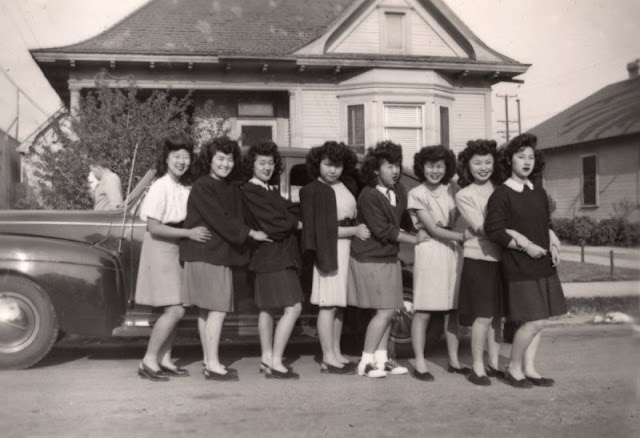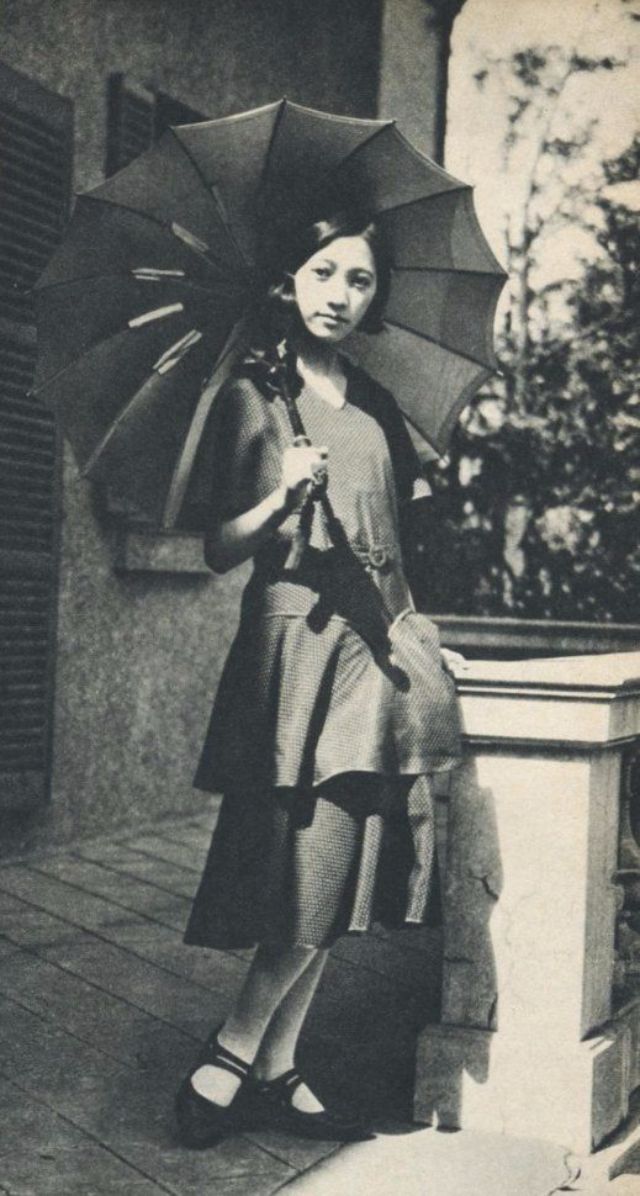The place of women in Japanese society provides an interesting blend of illusion and myth. There are two distinct Japanese societies - public and private. The popular Western image of the subservient Japanese woman is real, it is however, only an image. In their private family role, women quite often dominate the male members of the household. Judged by Western standards, the women of Japan are unusually dedicated to their families. The current position of women in Japanese society can be attributed to the vestiges of two old philosophies - Confucianism, and Samurai based feudalism. These influences are still strong, however in spite of these influences the public role of women has changed markedly since the beginning of World War II.
Japanese society has been formed from many influences, among the most important are Confucianism, Buddhism, and Samurai based feudalism. The Japanese, as in all societies derived from the Chinese Confucian heritage, value the group over the individual. The group, be it a family, or society at large, is greater then the individual, and group needs take precedence over individual needs. In practice this means that the Japanese define their well-being and sense of accomplishment through the success of the group. One women said: “The weight of trying to reconcile individual achievement and the family will always be heavy here because of our group oriented value system.” In addition to the importance of the group, Confucianism emphasized the supreme position of the male, and a hierarchical power structure for society.
The position of women changed little during the fifty year period leading to World War II. Educators spoke of “equality between men and women” as a corollary with the notion of “equality of all classes”10 which was instituted after the Meiji restoration, but women gained nothing. In 1887 laws were established which limited women's rights. Women did not have the vote, (universal suffrage for men came in 1924) and they still suffered from the vestiges of Samurai culture which kept them subservient to their husbands. They could not divorce their husbands, while they were subject to easy divorce by their husbands. The Mainichi, a Japanese newspaper, commented on the position of Japanese women during the 1920's: “...Japan maltreats and insults her women to a graver extent than any other country on the globe.” World War II changed everything.
Here, below is a collection of 34 vintage snaps that show what Japanese young girls looked like from between the 1930s and 1940s.
Japanese society has been formed from many influences, among the most important are Confucianism, Buddhism, and Samurai based feudalism. The Japanese, as in all societies derived from the Chinese Confucian heritage, value the group over the individual. The group, be it a family, or society at large, is greater then the individual, and group needs take precedence over individual needs. In practice this means that the Japanese define their well-being and sense of accomplishment through the success of the group. One women said: “The weight of trying to reconcile individual achievement and the family will always be heavy here because of our group oriented value system.” In addition to the importance of the group, Confucianism emphasized the supreme position of the male, and a hierarchical power structure for society.
The position of women changed little during the fifty year period leading to World War II. Educators spoke of “equality between men and women” as a corollary with the notion of “equality of all classes”10 which was instituted after the Meiji restoration, but women gained nothing. In 1887 laws were established which limited women's rights. Women did not have the vote, (universal suffrage for men came in 1924) and they still suffered from the vestiges of Samurai culture which kept them subservient to their husbands. They could not divorce their husbands, while they were subject to easy divorce by their husbands. The Mainichi, a Japanese newspaper, commented on the position of Japanese women during the 1920's: “...Japan maltreats and insults her women to a graver extent than any other country on the globe.” World War II changed everything.
Here, below is a collection of 34 vintage snaps that show what Japanese young girls looked like from between the 1930s and 1940s.









































